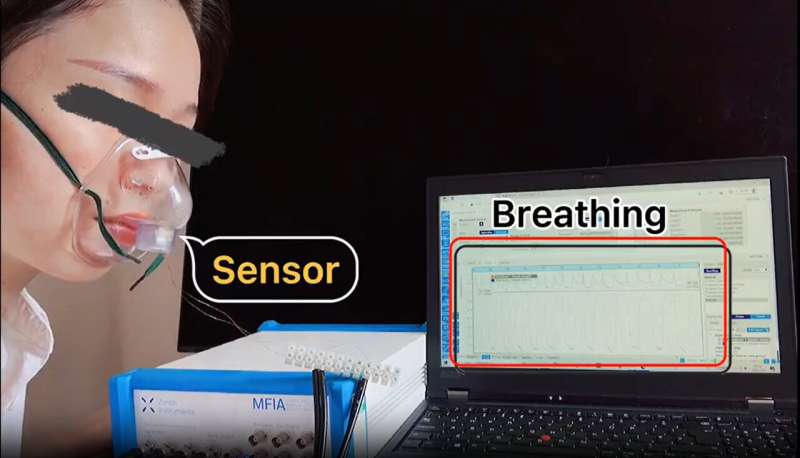
Manchester scientists have developed a new type of wearable sensor that can precisely track your breath, even the slightest changes in the exhaling and inhaling processes. This innovation, described in a study published in Advanced Materials, paves the way for improved monitoring of respiratory health and disease.
The sensor, based on a 2D material called hexagonal boron nitride (h-BN), is significantly more sensitive and accurate than previous designs. It can detect even subtle variations in breath patterns, such as those caused by asthma or sleep apnea.
“Our sensor is like a highly accurate microphone for your breath,” says lead author Prof. Cinzia Casiraghi, a researcher at The University of Manchester. “It can pick up on the tiniest changes in airflow, providing valuable physiological information on an individual, for example, related to their cardiac, neurological and pulmonary conditions as well as certain types of illness.”
How it works
The active material in the sensor is made of a hexagonal boron nitride ink, which has been designed by supramolecular chemistry to provide enhanced sensibility to water molecules. The ink is deposited between electrodes in the form of a thin film and then an alternating electric field is applied to the electrodes.
When you inhale and exhale, the electrical signal of the film changes based on the local humidity, showing a characteristic “V shape” associated with the full breathing cycle. Changes in the V shape can therefore be attributed to changes in the exhaling-inhaling process, for example, due to coughing, fever, runny and stuffy nose.
The new sensor has several advantages over existing technologies. It is more sensitive, meaning it can detect smaller changes in breath. It is also faster, with a response time of just milliseconds. And it is not affected by temperature or other environmental factors, making it more reliable for real-world use. Furthermore, it can be easily integrated into face masks.
Potential applications
The researchers believe that their sensor has the potential to revolutionize the way we monitor respiratory health, and it could be used to track the effectiveness of respiratory treatments.
“This sensor has the potential to make a real difference in the lives of people with respiratory problems,” says Dr. Liming Chen, Postdoc in Casiraghi group who has worked on this project. “It could help us to diagnose diseases earlier, track the progression of diseases, and help making personalized treatment plans.”
The researchers are now working on extending the technology to achieve high sensitivity and selectivity towards selected biomarkers found in the breath that are associated with diseases, for example, respiratory ammonia.
They hope to see their technology in the hands of patients and health care providers in the near future.

